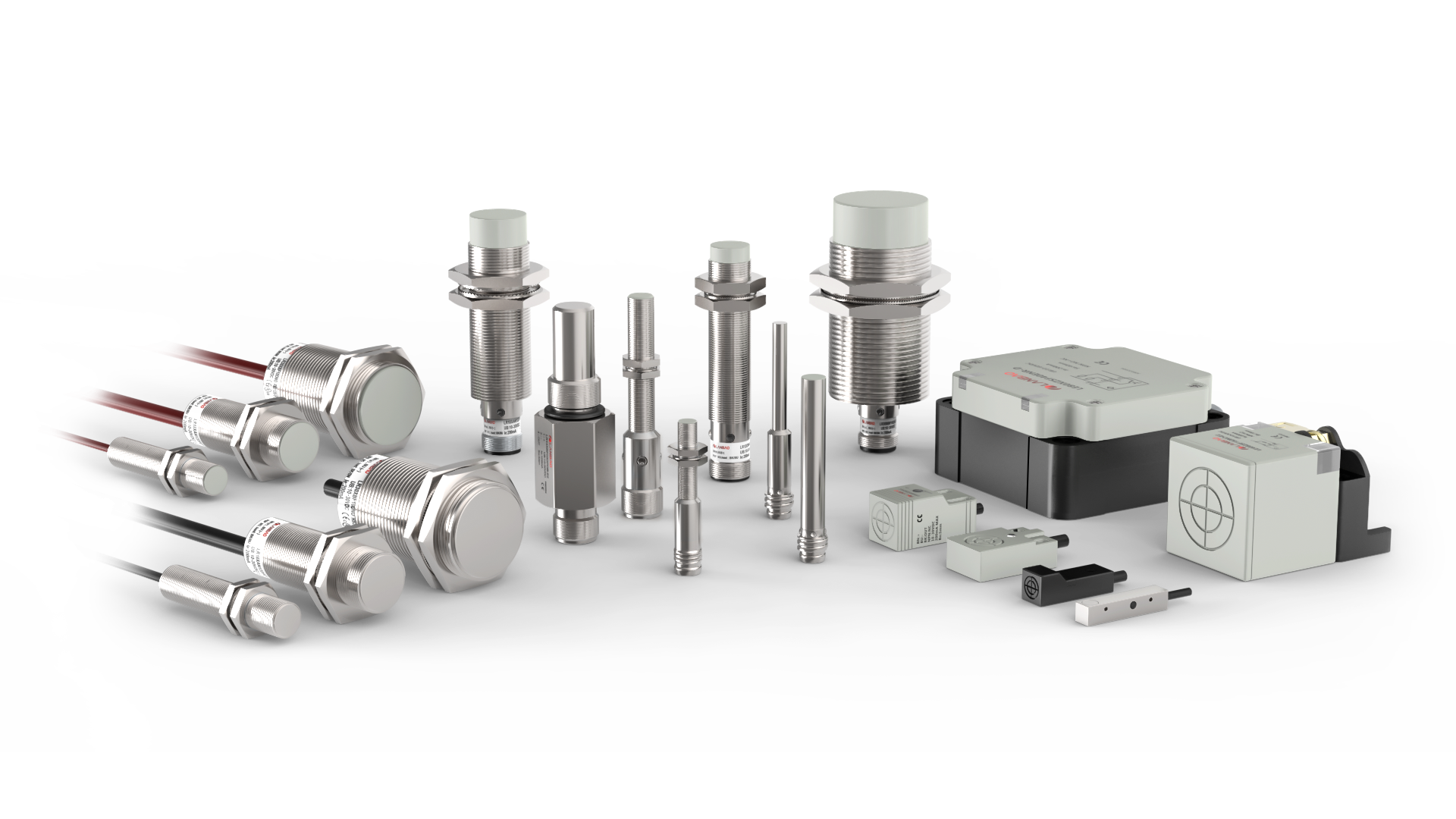For today's industrial applications, inductive sensors for position detection are indispensable. Compared with mechanical switches, they can create almost ideal conditions: non-contact detection, no wear, high switching frequency and high switching accuracy. In addition, they are not sensitive to vibration, dust and moisture. Inductive sensors can detect all metals non-contact. They are also known as inductive proximity switches or inductive sensors.
It is widely applied and can reduce inventory
Inductive sensors have a wide range of applications, especially in the detection and position monitoring of metal parts. Inductive sensors are particularly suitable for the automotive industry, the food industry, the machine tool industry, etc. Inductive proximity switches can be used in hazardous areas. Its NAMUR technology or sturdy casing can ensure a certain level of explosion-proof capability.
The housing material of inductive sensors is usually nickel-copper alloy or stainless steel. Among them, the latter is particularly suitable for high humidity or corrosive environments. With their robust structure and wear-free working principle, these sensors can be used as reliable solutions in many applications. For applications where there is slag spatter, inductive sensors can also be coated with special coatings, such as PTFE coating or similar materials.
The working principle of inductive sensors
Inductive sensors perform non-contact detection of metal objects by detecting changes in electromagnetic fields. They operate based on the principle of electromagnetic induction: when the magnetic field changes, an induced voltage is generated in the conductor.
The sensing surface of this sensor emits high-frequency electromagnetic fields. When a metal object approaches, the magnetic field of the sensor will be affected by the object and change. This change will be detected by the sensor and converted into a switch signal to indicate the presence of an object.
The designs of inductive sensors are diverse, and their corresponding switching distances also vary. The greater the switch distance, the wider the application range of the sensor. For example, it can be used in applications where the sensor cannot be directly installed near the object.
In conclusion, inductive sensors have high precision and reliable operation. Due to their non-contact working principle and diverse design types, they are indispensable equipment in many industrial automation applications.
The working principle of inductive sensors
Inductive sensors perform non-contact detection of metal objects by detecting changes in electromagnetic fields. They operate based on the principle of electromagnetic induction: when the magnetic field changes, an induced voltage is generated in the conductor.
The sensing surface of this sensor emits high-frequency electromagnetic fields. When a metal object approaches, the magnetic field of the sensor will be affected by the object and change. This change will be detected by the sensor and converted into a switch signal to indicate the presence of an object.
The designs of inductive sensors are diverse, and their corresponding switching distances also vary. The greater the switch distance, the wider the application range of the sensor. For example, it can be used in applications where the sensor cannot be directly installed near the object.
In conclusion, inductive sensors have high precision and reliable operation. Due to their non-contact working principle and diverse design types, they are indispensable equipment in many industrial automation applications.
Diverse designs enable flexible detection
Due to the small measurement tolerance, inductive sensors can ensure reliable detection. The switching distance of inductive sensors varies depending on the design. For instance, the switching distance of large inductive sensors can reach up to 70mm. Inductive sensors come in different installation types: Flush sensors are flush with the installation surface, while non-flush sensors protrude a few millimeters, achieving a greater switching distance.
The detection distance of inductive sensors is affected by the correction coefficient, and the switching distance for metals other than steel is smaller. LANBAO can provide non-attenuated inductive sensors with a correction factor of 1, which have a uniform switching distance for all metals. Inductive sensors are typically used as PNP/NPN normally open or normally closed contacts. Models with analog output can meet more special requirements.
Diverse designs enable flexible detection
Due to the small measurement tolerance, inductive sensors can ensure reliable detection. The switching distance of inductive sensors varies depending on the design. For instance, the switching distance of large inductive sensors can reach up to 70mm. Inductive sensors come in different installation types: Flush sensors are flush with the installation surface, while non-flush sensors protrude a few millimeters, achieving a greater switching distance.
The detection distance of inductive sensors is affected by the correction coefficient, and the switching distance for metals other than steel is smaller. LANBAO can provide non-attenuated inductive sensors with a correction factor of 1, which have a uniform switching distance for all metals. Inductive sensors are typically used as PNP/NPN normally open or normally closed contacts. Models with analog output can meet more special requirements.
Sturdy and reliable - High protection level suitable for harsh environments
With a wide operating temperature range and high protection level, these sensors are highly suitable for use in harsh industrial environments. Among them, inductive sensors with a protection level of IP68 even have high sealing performance in extreme applications in industries such as food, pharmaceuticals, and construction machinery. Their operating temperature can reach up to 85 °C at most.
The M12 connector ensures simple installation
The M12 connector is the standard interface for connecting sensors because it can ensure quick, simple and accurate installation. LANBAO also offers inductive sensors with cable connections, which are typically installed in applications with limited space. Due to its wide application and high reliability, inductive sensors are important components in modern automation technology and are used in numerous industrial fields.
Post time: Sep-03-2025

